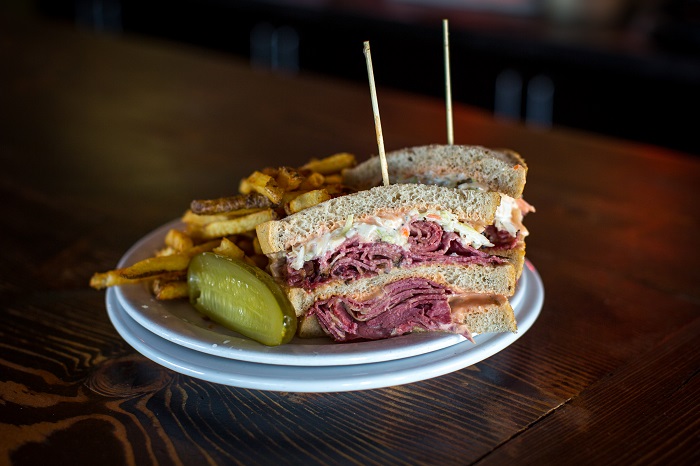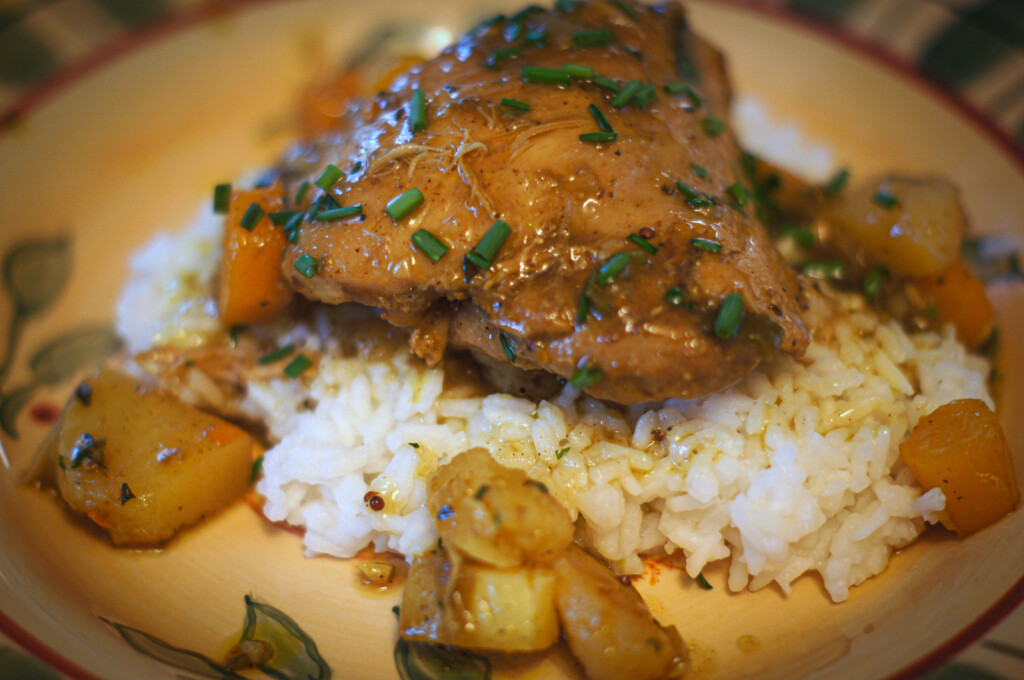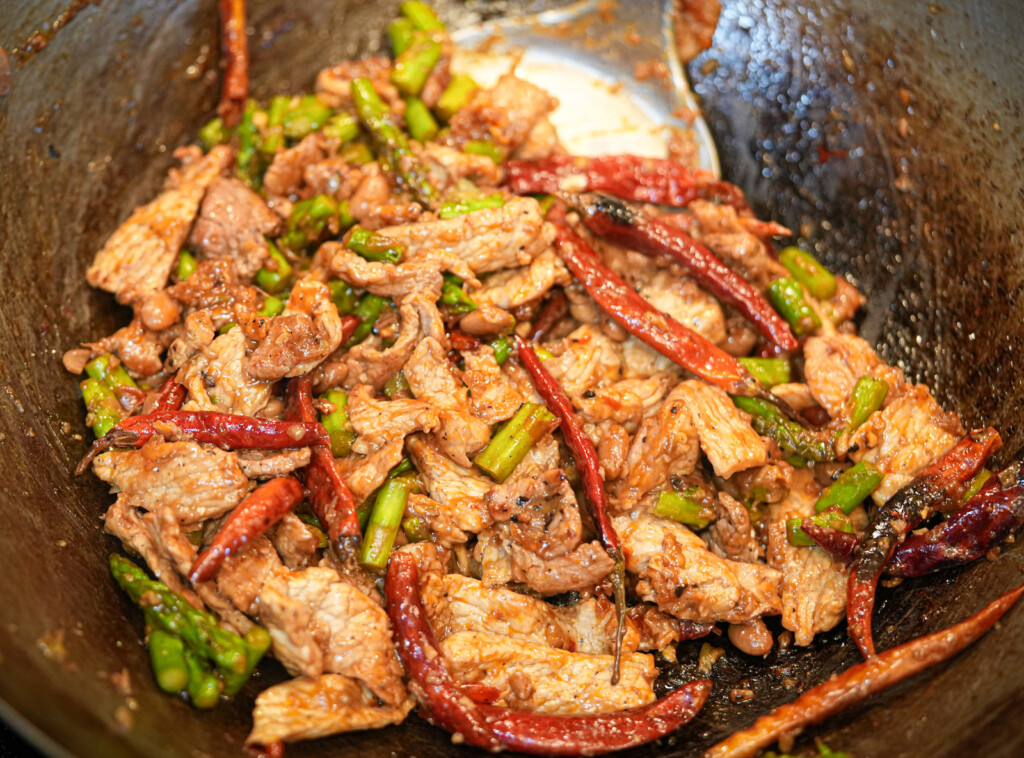
Folks either crave or hate Jewish Delis. As Mitch Hedberg explains: I hate sandwiches at New York delis. Too much meat on the sandwich. It’s like a cow with a cracker on either side. “Would you like anything else with the pastrami sandwich?” “Yeah, a loaf of bread and some other people!” But the core of the deli is its pastrami, corned beef, Jewish rye, and kosher dill pickles.
Famous delis like Katz’s in NYC or Langer’s in LA claim to have the best sandwiches on the planet. Who am I to argue? Yet, delis did not invent this food, they just made it better. So where did pastrami and corned beef originate? Eastern Europe.
Pastrami
Pastrami is a meat product usually made from beef, although turkey is now making a run at it. The raw meat is brined, partially dried, seasoned with herbs and spices, then smoked and steamed. In Europe, beef plate is the traditional cut of meat for making pastrami, although it is now common in the United States to see it made from beef brisket, beef round, and turkey.
Like corned beef, pastrami was originally created as a way to preserve meat before refrigeration. The name pastrami comes from the Romanian pastirma. The modified “pastrami” spelling was probably introduced in imitation of the American English pronunciation of “salami.”
Until the 1870s, the majority of immigrants in the United States had arrived from Germany. German-language New York newspapers were filled with advertisements for grocers or provisioners, listing a wide array of cheeses, sausages, and pickles under the heading “Delicatessen.” Until the early years of the 20th century, these were known as “appetizer or delicatessen shops”—retailers of fancy foods, chief among them; prepared meats.
Migration from Eastern European countries, including Romania, began to pick up in the 1880s and accelerated through the early 20th century. Between 1881 and 1914, in particular, some 75,000 Jews left Romania and settled in New York City. As these immigrants arrived on the Lower East Side, they began to open delicatessen stores that resembled those of their German predecessors, but featured kosher products alongside some of the more popular delicacies from their homelands.
One of those delicacies, it seems, was pastirma, and it didn’t remain an isolated immigrant specialty for very long. Among Jewish Romanians, goose breasts were commonly made into pastrami because they were inexpensive. Beef navel was cheaper than goose meat in America, so the Romanian Jews in America adapted their recipe and began to make the cheaper alternative, beef pastrami.
Sussman Volk is generally credited with producing the first pastrami sandwich in the New York in 1887, on Delancey Street. Volk, a kosher butcher and immigrant from Lithuania, claimed he got the recipe from a Romanian friend in exchange for storing the friend’s luggage while the friend returned to Romania.
One of the first well-known delis is Katz’s, the iconic Lower East Side delicatessen that’s as widely known for its pastrami as it is for that When Harry Met Sally scene. Katz’s was founded in 1888, and, though no one seems to know when the store actually started selling pastrami, the general consensus seems to be that if they are so good at it now, they must have been doing it very early on.
Corned beef
Although the exact beginnings of corned beef are unknown, it most likely came about when people began preserving meat through salt curing. Evidence of its legacy is apparent in numerous cultures, including ancient Europe and the Middle East. The term comes from the treatment of the meat with large grained kosher or rock salt, also called “corns” of salt. It features as an ingredient in many cuisines. Most recipes include nitrates or nitrites, which convert the natural myoglobin in beef to nitrosomyoglobin, giving it its pink color. Often, sugar and spices are also added to recipes for corned beef.
Corned beef was popular during World War I and World War II, when fresh meat was rationed. It also remains especially popular in Canada in a variety of dishes, perhaps most prominently, Montreal-style smoked meat.
Although the practice of curing beef was found locally in many cultures, the industrial production of corned beef started in the British Industrial Revolution. Irish corned beef was used and traded extensively from the 17th century to the mid-19th century for British civilian consumption and as provisions for the British naval fleets and North American armies due to its non perishable nature. The product was also traded to the French for use in Caribbean sugar plantations as sustenance for the colonists and the slave laborers.
Ireland produced a significant amount of the corned beef in the Atlantic trade from local cattle and imported salt. Although the production and trade of corned beef as a commodity was a source of great wealth for the colonial nations of Britain and France, in the colonies themselves, the product was looked upon with disdain due to its association with poverty and slavery.
Despite being a major producer of beef, most of the people of Ireland during this period consumed little of the meat produced, in either fresh or salted form, due to its prohibitive cost. Most of the corned beef was exported.
In North America, corned beef dishes are associated with traditional Irish cuisine. However, considerable debate remains about the association of corned beef with Ireland. The popularity of corned beef compared to bacon among the immigrant Irish may have been due to corned beef being considered a luxury product in their native land, while it was cheaply and readily available in America.
The Jewish population produced similar salt-cured product made from beef brisket that the Irish immigrants purchased as corned beef from Jewish butchers. This may have been facilitated by the close cultural interactions and collaboration of these two diverse cultures in the United States’ main 19th and 20th-century immigrant port of entry, New York City.
Canned corned beef has long become one of the standard meals included in military field ration packs around the world, due to its simplicity and instant preparation in such rations. One example is the American Meal Ready to Eat (MRE) pack. Astronaut John Young snuck a contraband corned beef sandwich on board Gemini 3, hiding it in a pocket of his spacesuit.
For some reason, pastrami and corned beef creates a deli addiction. As Mario Batali relates: “You sit down at Katz’s and you eat the big bowl of pickles and you’re eating the pastrami sandwich, and halfway through you say to yourself, I should really wrap this up and save it for tomorrow. But the sandwich is calling you: Remember the taste you just had. So fatty. It’s what you want. It’s what you are! I’ve never gotten home from Katz’s with a doggie bag in my hand.”

A pastrami sandwich at Katz’s is what’s bad and good about food. It’s the sacred and the profane together.
Check out Michael Feldman’s Salt Lake Deli History
FOR MORE FOOD STORIES GO HERE





